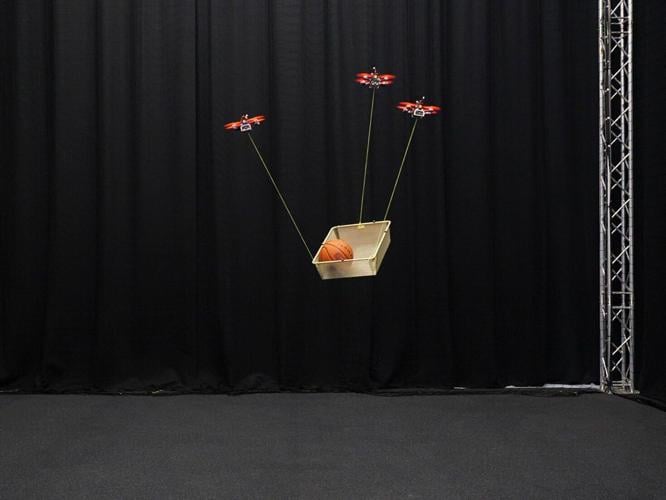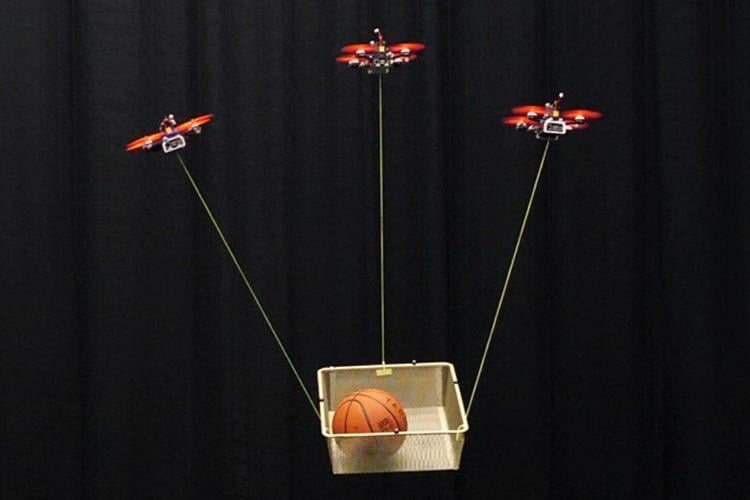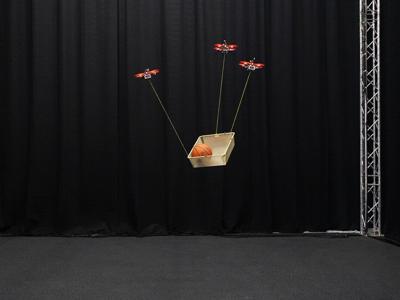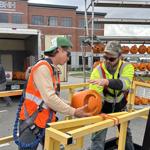By Dean Murray
An incredible innovation sees drones working together to carry loads.
Scientists at Dutch university TU Delft have developed a new algorithm that allows multiple autonomous drones to work together to control and transport heavy payloads, even in windy conditions.
They say the system could be ideal for reaching and maintaining hardâtoâreach infrastructure, such as offshore wind turbines.
With often harsh weather, limited payload capacity and unpredictable contact with the environment, it is difficult for current drones to operate safely and effectively.

An incredible innovation sees drones working together to carry loads. (Sihao Sun/TU Delft via SWNS)
“A single drone can only carry a very limited load,” explains Sihao Sun, robotics researcher at TU Delft. “This makes it hard to use drones for tasks like delivering heavy building materials to remote areas, transporting large amount of crops in mountainous regions, or assisting in rescue missions.”
To overcome these limitations, the TU Delft team designed a system where multiple drones are connected to a payload via cables, thereby carrying much heavier loads.
By adjusting their positions in real time, the drones can not only lift and transport the heavy object but also control its orientation, which is crucial for precise placement in complex environments.
“The real challenge is the coordination,” says Sun. “When drones are physically connected, they have to respond to each other and to external disturbances like sudden movements of the payload in rapid motions. Traditional control algorithms are simply too slow and rigid for that.”

Scientists at Dutch university TU Delft have developed a new algorithm that allows multiple autonomous drones to work together. (Sihao Sun/TU Delft via SWNS)
The new algorithm developed by the team is fast, flexible and robust. It adapts to changing payloads and compensates for external forces without requiring sensors on the payload itself, which is an important advantage in realâworld scenarios.
“We built our own quadrotors and tested them in a controlled lab environment,” Sun shares. “We used up to four drones at once, added obstacles, simulated wind with a fan, and even used a moving payload like a basketball to test dynamic responses.” The system passed all tests. And because the drones are autonomous, they only need to be given a destination. They navigate independently, adjusting for obstacles and disturbances along the way. “You just tell them where to go, and they figure out the rest”, Sun adds.
Currently, the system uses external motionâcapture cameras for indoor testing and is therefore not yet suitable for outdoor environments. The team hopes to prepare the technology for realâworld deployment in the future, with potential applications in search and rescue, agriculture and remote construction.
The results have been published in Science Robotics.
























(0) comments
Welcome to the discussion.
Log In
Keep it Clean. Please avoid obscene, vulgar, lewd, racist or sexually-oriented language.
PLEASE TURN OFF YOUR CAPS LOCK.
Don't Threaten. Threats of harming another person will not be tolerated.
Be Truthful. Don't knowingly lie about anyone or anything.
Be Nice. No racism, sexism or any sort of -ism that is degrading to another person.
Be Proactive. Use the 'Report' link on each comment to let us know of abusive posts.
Share with Us. We'd love to hear eyewitness accounts, the history behind an article.